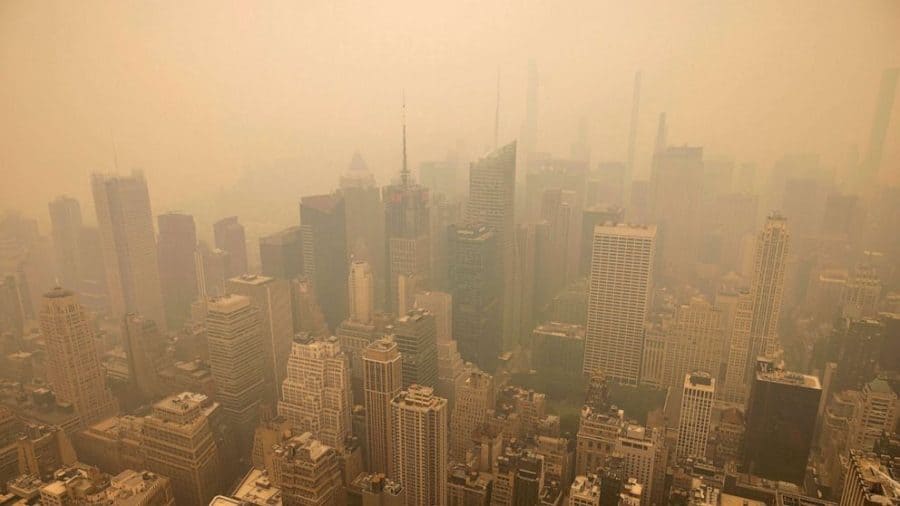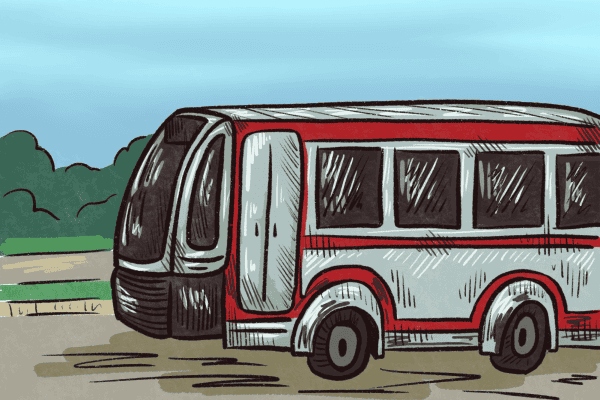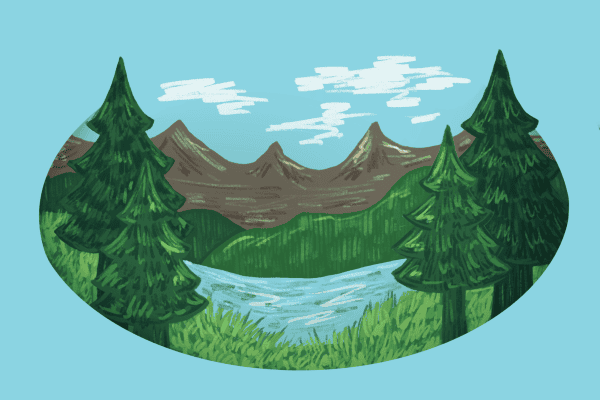Opinion | Canadian wildfires serve as a wake-up call
Courtesy of Yuki Iwamura with Associated Press
New York City is covered in haze as photographed from the Empire State Building observatory on June 7 in New York.
June 14, 2023
Canada’s forests are aflame from east to west, and this could bring change to all countries.
In early June, 14,000 people were evacuated from the province of Quebec because of the raging fires and the fight against them. The fires caused thick smoke in the region that led to a myriad of air quality warnings that broke previous records.
Similar effects struck the northern part of the United States in cities such as New York and Philadelphia, reaching as far south as Baltimore and Washington, D.C. The previously uncomplicated horizons were blanketed by the orange smoke.
Our skies will clear as the smoke gradually blows away, but this is just the beginning of wildfire season for Canada and surrounding regions.
Controlled burning, or prescribed burning, is often required to maintain a forest’s overall health by ridding it of dead brush and fallen branches. It returns nutrients from the matter to the soil and can reduce invasive insect and plant species. These fires are calculated, from how they’re ignited to how far the fires will spread.
Historically, smaller fires occurred in forests regularly, but as fire suppression efforts have grown, flammable materials build up, leaving a lot of variables for controlled burning up in the air.
Of the more than 400 fires currently active in Canada, only one-third are marked as “under control,” and the remaining fires are considered out of control or are simply being held, although their ferocity can fluctuate quickly. These numbers grow larger as each day passes during wildfire season, which lasts from May to October.
In the past decades, Canada’s forest service has faced many budget cuts, reducing employment to a fraction of its previous size. With fewer employees, forest services have been worn thin and have called on the help of fire services from neighboring countries, totaling around 1,100 fire personnel sent to Canada.
“Since May, more than 600 U.S. firefighters, support personnel and firefighting assets have been deployed, working alongside Canadian firefighters to tackle what is likely to be the worst fire season in Canadian history, and one that has huge impacts here in the United States,” President Joe Biden said in a statement.
According to the National Interagency Fire Center, since the beginning of 2023, there have been 19,693 wildfires in the U.S., spanning 620,986 acres. Currently, five large fires are active, not including those being monitored in complexes.
Americans have taken to social media to discuss their experiences while living in regions blanketed by smoke. It’s easy for the public to consider climate change as a far-off issue that either can’t be changed or won’t affect their future.
Experts believe this tragic series of wildfires could lead to a heightened understanding of the climate crisis from those affected, but the event is far from over.
In the past, events like this one have pushed forward social change but have yet to lead to any systematic change. The U.S. has taken consistent steps backward.
Recently, the Supreme Court has ruled on multiple cases against the Environmental Protection Agency. Last year, the Supreme Court ruled against allowing the EPA to place a cap on carbon emissions from power plants.
This case is considered one of the most significant climate control cases in the last decade and a major blow to all federal agencies. Just below the surface of this ruling was the attempt to revoke agencies’ ability to issue regulations without specific authorization from Congress.
The ruling appears more as a power play than as one aimed at the overall well-being of our country. In recent years, the Clean Water Act and fresh legislation such as the Build Back Better Act have also been stripped of their environmental protection abilities.
Now is our time to take a look at what is occurring just across our northern border and internalize how we approach similar situations on the home front. We’re upset about the fires and their emissions, but what are we doing about our own besides making it more difficult to prevent issues like the ones transpiring in Canada? Discussing Canada’s shortcomings without also addressing our own will inevitably create a moot point.
If there has ever been a time to look within, it has long passed.










